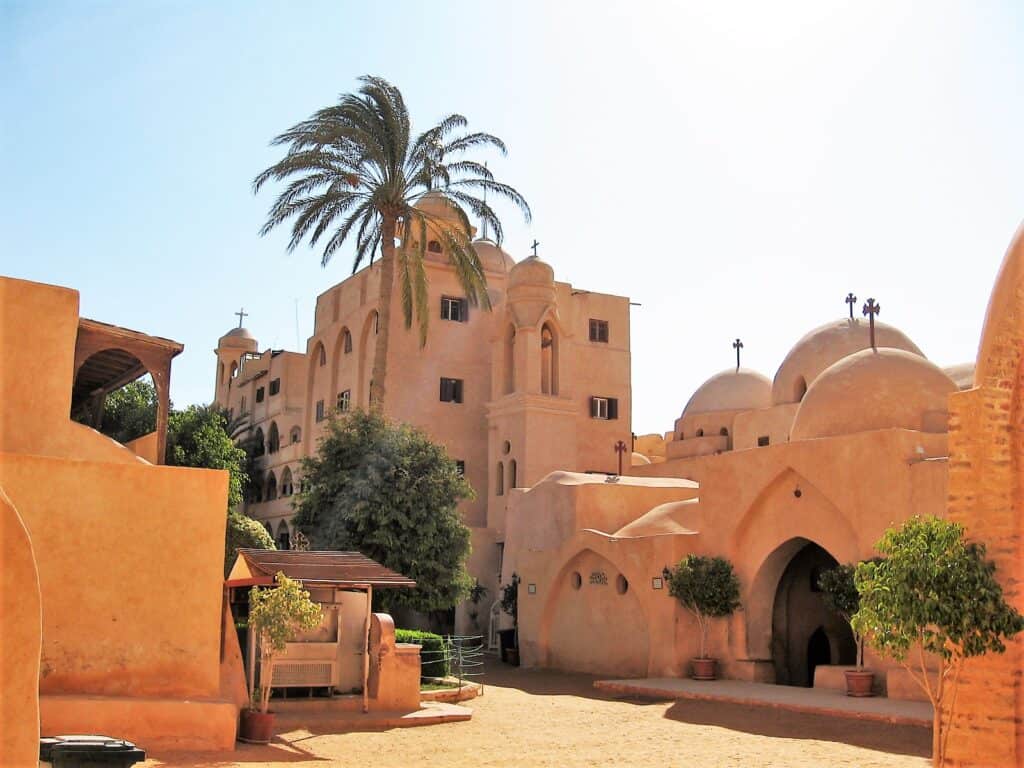Today, we will talk about the Christian Monuments and Monasteries in Egypt. When it comes to religion in Egypt, most of us tend to think either of the current dominant religion (Islam) or, especially in terms of tourism, of the ancient religion. The beliefs of god-king Pharaohs, the afterlife, and the concept of multiple deities fascinate most of us and is often a tourism focal point. However, what you may now know is that Christianity also played a large role in Egyptian history and still does today.
The Christian religion has an interesting history in Egypt. It has changed and adapted over time but ultimately survived over thousands of years. Amid the bustling streets of Cairo and out amid the wind-blown sands of the desert you will still find Christian churches, monasteries, and monuments; many of which are still working and in use today.
For those interested in learning more about Christianity in Egypt, and the monuments and monasteries that you can still see and visit, this article is for you.
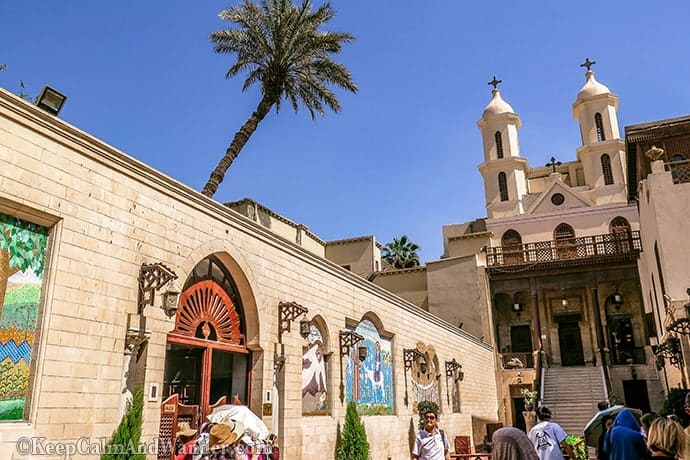
Christianity in Egypt
The Arrival of Christianity in Egypt
Christianity is said to have been brought to Egypt by the Apostle Saint Mark shortly after the death of Jesus Christ.
While the arrival of Christianity in Egypt was not entirely without conflict, many Egyptians quickly accepted and adapted to this new religion. This was in part due to timing, but also because Christianity and the ancient Egyptian religion had many similarities.
Christianity arrived in Egypt at a time where the old belief system was falling apart. The god-king Pharaohs had been dethroned and the Roman Empire had swept into the country. While Christianity was new and different, there were many similar aspects that the Egyptians understood. Concepts like the death and resurrection of a god and the belief in an afterlife; a paradise where good and faithful souls would be rewarded.
Furthermore, the sign of the Christian cross was very similar to that of the Egyptian Ankh and, of course, the belief that God chose Egypt as a hiding place for baby Jesus was a source of pride for many Christian Egyptians.
Christianity in Egypt Today
Today, Christianity is the second largest religion in Egypt (the dominant religion is Islam). The majority of the Christians are Coptic Christians, and it is estimated that there are somewhere between 20-30 million followers of this faith in Egypt alone. In fact, Egypt has the largest Christian population in the Middle East and North Africa.
Christian Monuments and Monasteries in Egypt
Unsurprisingly given the history and current status of Christianity in Egypt, the country is home to a number of Christian churches, monuments, and monasteries. Many of which can be visited during your Egypt trip.
While Christian monuments and monasteries don’t tend to be the focus of most escorted tours of Egypt, you can customize your vacation and ask to include some of these sites in your private tour packages of Egypt.
Here are some of the main Christian monuments and monasteries in Egypt that you may be interested in seeing for yourself.
Hanging Church of Cairo
The hanging church in old Cairo is actually called the Saint Virgin Mary’s Coptic Orthodox Church. It’s one of the oldest churches in Egypt and is thought to date back to the 7th century, although there was another building located on the same site that dates as far back as the 3rd century.
The Hanging Church gets its nickname because of its appearance. The church itself is built above a gatehouse of a Roman-built fortress, and the nave is suspended over a passageway making it appear as if the church is hanging above. While the site is impressive today, it was even more impressive in the past when the ground level was several meters lower.
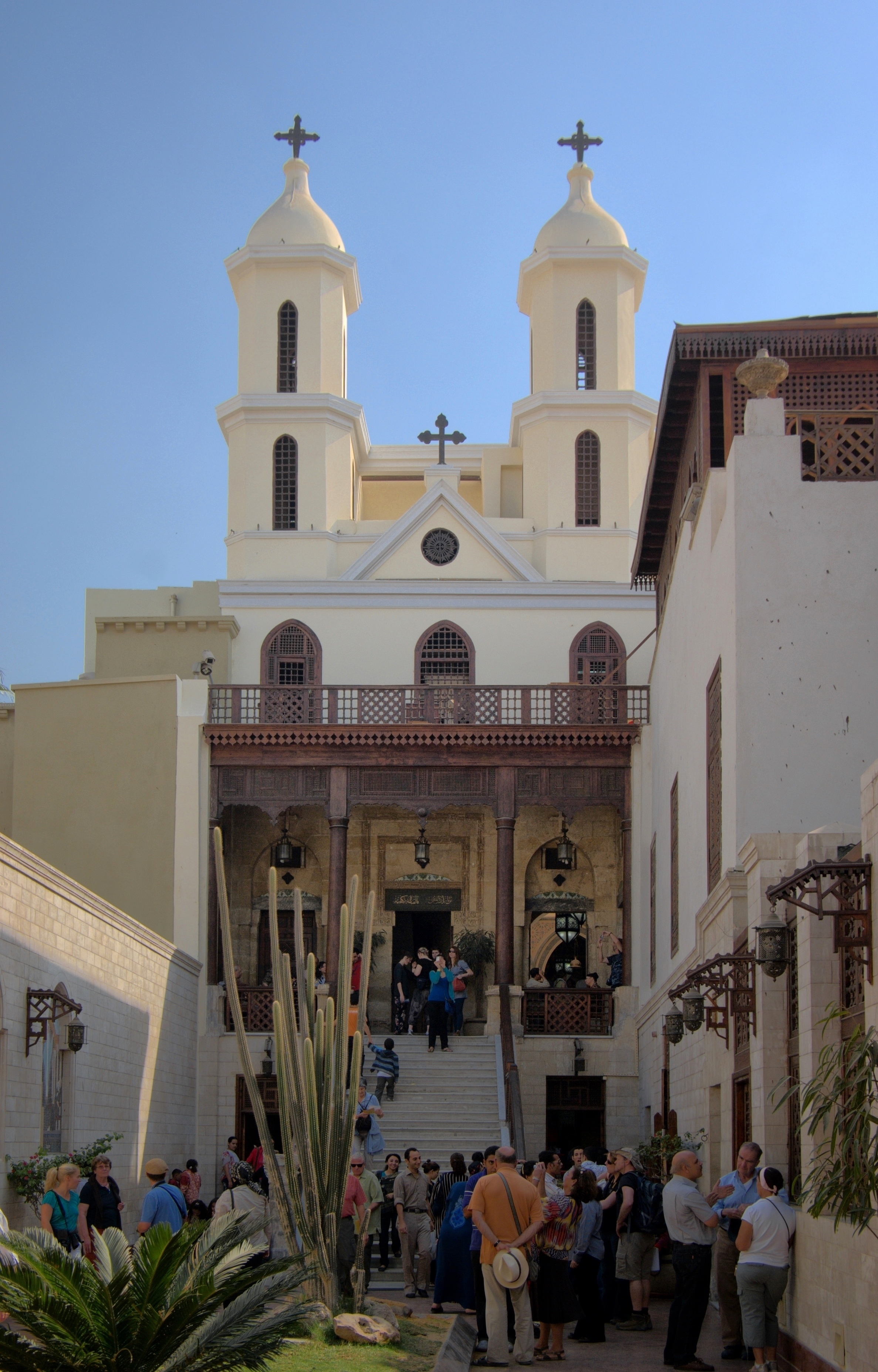
The Hanging Church in Cairo is not just historic and unique in its appearance, but it’s also one of the most religiously significant churches in Egypt. It was designated as the official residence of the Coptic Orthodox Pope in 1047. Several patriarchs chose to be consecrated, elected, and enthroned in this church and it is known as a site for several different apparitions of the Virgin Mary.
Today, tourists are welcome to visit the Hanging Church. Admission is free and the church is open from 9am to 5pm every day. Coptic Mass is held from 8am-11am on Wednesdays and Fridays and from 9am-11am on Sundays.
Abu Serga Church
Abu Serga is another historic church located in Cairo. Also known as Saints Sergius and Bacchus Church, it is believed that Abu Serga was built either in the 5th or 8th century. This church is dedicated to two Martyrs named Sergius and Bacchus who were Roman officers that were killed and martyred after it was discovered that they were both secret Christians.
It is also believed that Joseph, Mary, and baby Jesus stopped in the spot upon which the church was built after they fled to Egypt. As such, for most visitors, the main draw of Abu Serga is the crypt where the Holy Family is said to have rested.
The Church of Saint Barbara
Dating back to the 5th or 6th century, the Church of Saint Barbara is another historic church that can be found in Cairo. Like most of the other Coptic buildings in Cairo, it was rebuilt multiple times- the most notable of which was during the 11th century.
The Church of Saint Barbara was originally dedicated to St. Cyrus and St. John, two martyrs who were worshipped for their healing powers. However, documents dating back to the 13 century say that relics of St. Barbara were moved and kept here, hence its current name. This church is known for its precious items which included bible caskets, two-door panels, and ancient icons, most of which now can be found in the nearby Coptic museum.
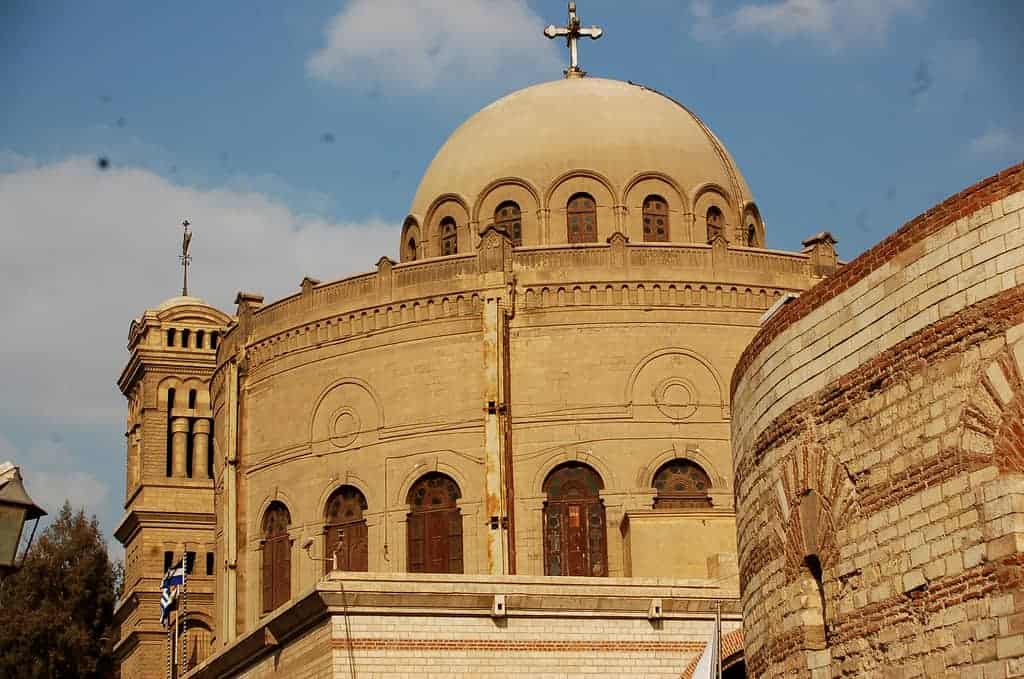
Monastery of Saint Simon
The Monastery of Saint Simon is one of the most unique Christian sites in all of Egypt, and also the largest Christian church in the Middle East.
The Monastery of Saint Simon is located in what is referred to as ‘Garbage City’ which is within the limits of metropolitan Cairo. The official name for this area is Manshiyat Nasser, and the majority of people who live here are Coptic Christians known as the Zabbaleen. They collect garbage from Cairo’s residents (for a fee) and bring it back to their neighbourhood to sort and find recyclable goods.
It was the Zabbaleen that built the Monastery of Saint Simon in a cave within Garbage City. Saint Simon was a tanner from the 10th century, and this monastery built in his name can seat up to 20,000 people. There are also separate church spaces built within the surrounding caves, creating a large Christian complex within Garbage City.
While this part of Cairo isn’t exactly known for tourism, hundreds of thousands of people still make the pilgrimage to this monastery every year.
Saint Catherine’s Monastery
Officially known as the ‘Sacred Monastery of the God-Trodden Mount Sinai’, this monastery is dedicated to Catherine of Alexandria and is located at the mouth of a gorge near the base of Mount Sinai.
This monastery was built between 548 and 565 and is one of the oldest functioning Christian monasteries in the world. It was built by order of Emperor Justinian on the site where Moses is said to have seen the burning bush; a sacred site to Christianity, Islam, and Judaism.
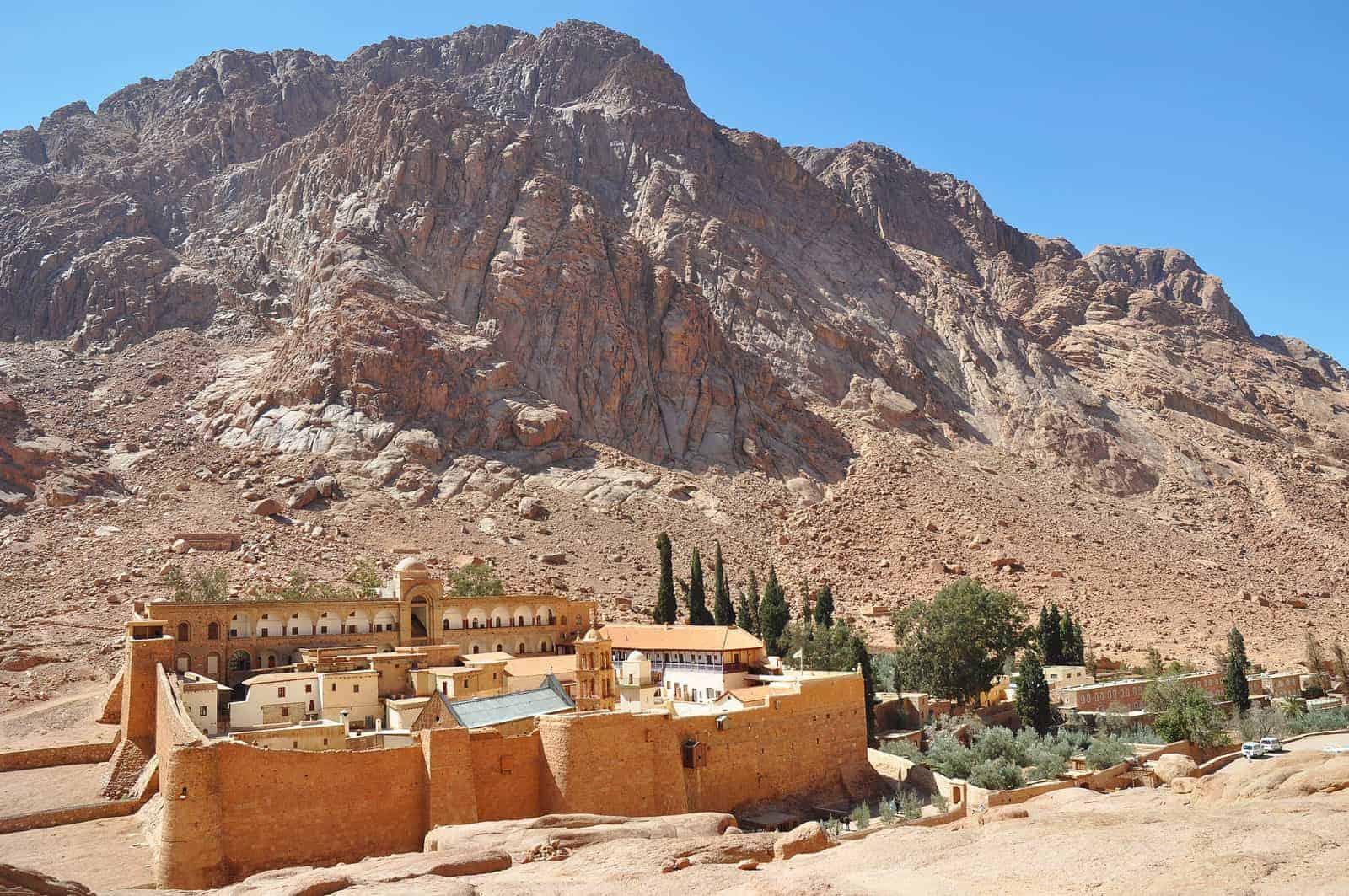
Saint Catherine’s Monastery also contains the world’s oldest continually operating library which is home to a number of unique books. It also holds the second largest collection of early codices and manuscripts (the Vatican Library has the largest number). The Codex Sinaiticus, which dates back to the 4th Century and is one of the oldest preserved manuscripts of the Bible was found here. Also discovered at the Monastery was the Syriac Sinaiticus, which pre-dates the Codex Sinaiticus and was crucial in understanding the history of the New Testament. The Syriac Sinaiticus can still be found at the monastery today.
Unsurprisingly, Saint Catherine’s Monastery is a UNESCO World Heritage Site.
Monastery of Saint Anthony
The Monastery of Saint Anthony is located in the eastern Sahara Desert, in the Red Sea Mountains near modern-day Hurghada. It was built by an oasis where Saint Anthony the Great, one of the ‘Desert Fathers’, spent his time after choosing to travel into the desert to escape those seeking his advice as he believed that it distracted him from his own worship.
The Monastery was built in 356, a few years after Saint Anthony’s death. It is one of the oldest monasteries in the world and the same rituals have been practiced here, unchanged, for more than sixteen centuries.
While this monastery was attacked and faced a lot of damage over the years, it still has plenty to see. Today, the monastery acts like a small town with several churches, gardens, and even a working bakery. There are plenty of remarkable paintings, some of which are believed to date back to the 7th and 8th centuries, as well as ancient woodworks, and more than 1700 documents in the library.
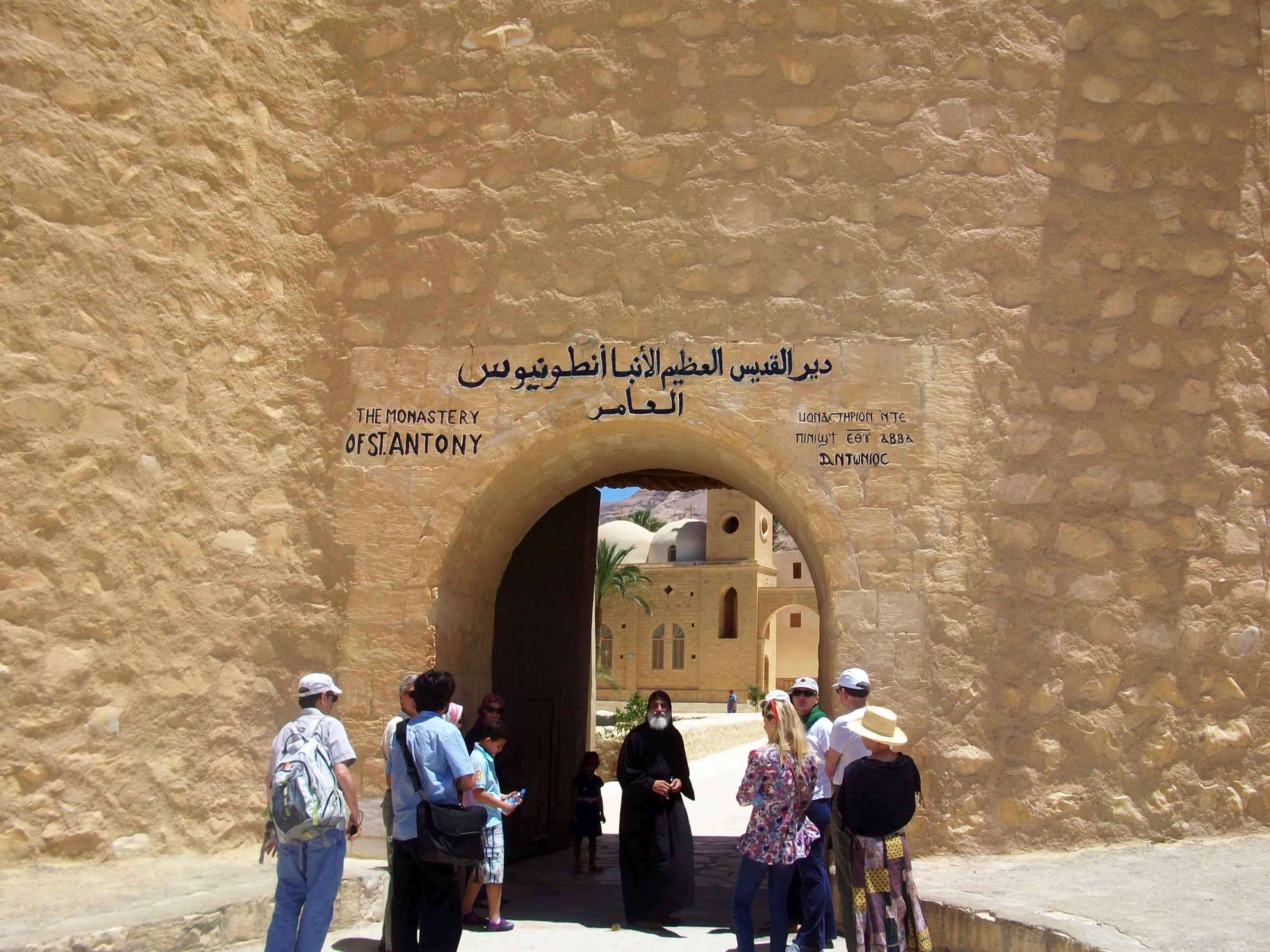
Monastery of Saint Paul
Located in Egypt’s Eastern Desert, the Monastery of Saint Paul dates back to the 5th century. Saint Paul is believed to have been the mentor of Saint Anthony. Saint Paul was orphaned by the age of sixteen and left his inheritance behind to dedicate his life to Egypt. He found refuge in the Eastern Desert where he lived to be 113. It is said that Saint Anthony sought out Saint Paul after hearing that there was a man in the desert who was holier than he. The two became friends until Paul’s death. According to the stories, Anthony saw Paul’s spirit carried away by the angels and watched as two lions then dug a grave and buried his body.
The Monastery of Saint Paul also known as Deir Anba Bula, is built like a fortress. This was common due to Christian monasteries and churches being raided and pillaged by Bedouin and Berber groups. Despite its remote location, the Monastery of Saint Paul still fell under attack several times over the centuries.
Should you choose to visit, there are three churches on the grounds which you can visit including that of Saint Paul the Anchorite which is dug into the cave where Saint Paul spent so many years. There are also many manuscripts owned by the monastery that you can view as well.
Wadi el-Natroun
Wadi el-Natroun is a valley located about 62 miles from Cairo. In ancient Egypt, it was important as it was full of the carbonated sodium needed for the mummification process. It was also important to the Romans, who found the area to also be a source of silica which they used for making glass. However, while this wadi was full of resources, it also had another use; a safe haven for Christians fleeing Roman persecution.
At one point, Wadi el-Natroun was full of monasteries. However, after the wear and tear of time, weather, and Bedouin raids, only four monasteries have survived and can be seen today. These are:
1) The Monastery of Anba Bishoy
2) The Monastery of Baramus
3) The Monastery of Abu Makar
4) The Monastery of El-Suryan
It is possible to visit all four of these monasteries as a day trip from Cairo. The Monastery of Abu Makar is especially impressive. It is home to more than 100 monks and has over 600 works who live on the grounds and work on the monastery’s farm.
Final Word
Without a doubt, Egypt has a rich religious history and while the ancient Pharaonic religion and current Islam religion tend to be the focus, those who have an interest in Christianity in Egypt will not be disappointed by the incredible churches, monasteries, and Christian sites spread throughout the country.
If you are interested in adding any of these Christian monuments and monasteries to your visit, get in touch with our team. We’re happy to customize your Egypt private tour package to your interests.
